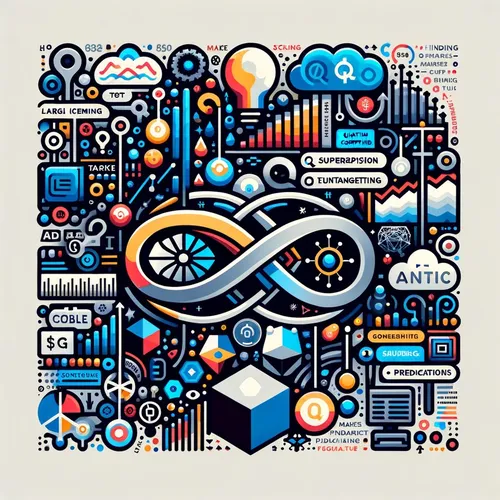Quantum Leap: Quantinuum and AstraZeneca Redefine Cancer Diagnostics with Hybrid Computing
- Author
- Inception Point Ai
- Published
- Sun 13 Apr 2025
- Episode Link
- https://www.spreaker.com/episode/quantum-leap-quantinuum-and-astrazeneca-redefine-cancer-diagnostics-with-hybrid-computing--65557166
This is your Quantum Market Watch podcast.
Ah, greetings, fellow explorers of the quantum frontier! I’m Leo, your Learning Enhanced Operator and resident quantum computing expert, here at *Quantum Market Watch.* Let’s dive directly into today’s pulsating moment in quantum—a monumental shift in the realm of healthcare diagnostics.
Just a few hours ago, Quantinuum announced the debut of their quantum-enhanced diagnostic algorithm, designed in collaboration with AstraZeneca. This new system leverages the power of hybrid quantum-classical computing to simulate molecular interactions at an unprecedented scale, specifically targeting biomarkers for early-stage cancer detection. Now, I know what you’re thinking: how does a quantum computer, with its qubits and quantum gates, transform the way we detect diseases? Allow me to illuminate the quantum intricacies behind this breakthrough.
At its core, quantum computing excels in solving problems involving vast probabilities—problems where classical computers simply choke under the sheer weight of possibilities. In molecular biology, this is critical. Simulating molecular interactions involves billions, if not trillions, of potential configurations. Classic algorithms grind through these permutations painfully, often discarding subtleties. But quantum systems, like the ones Quantinuum is deploying, leverage the superposition and entanglement of qubits, allowing them to analyze multiple configurations simultaneously. AstraZeneca reported this collaboration reduced their molecular simulation timeframes from weeks to mere hours. Let that sink in—a leap that turns medical bottlenecks into fluid workflows.
Now, let’s talk qubits. Quantinuum uses ion-trap technology, which manipulates individual charged ions as qubits. These provide highly stable and controllable quantum states, ideal for delicate molecular simulations. Imagine a ballet—not clunky and robotic, but fluid and precise. This stability enables what researchers term "high-fidelity" error correction, an Achilles' heel quantum systems have been wrestling with for decades. This aligns perfectly with the recent fireside chat at NVIDIA GTC 2025, where industry leaders emphasized error correction as a cornerstone of the next quantum era. Quantinuum is clearly taking this ethos to heart.
But let’s zoom out for a moment. Why does this matter beyond the lab? For one, it signals a paradigm shift in how pharmaceutical companies approach research and development. Traditional R&D pipelines are expensive and slow. By harnessing quantum algorithms, firms like AstraZeneca can identify viable drug candidates faster, reduce clinical trial costs, and, most importantly, accelerate the delivery of life-saving treatments to patients. Quantum-powered simulations might soon become the diagnostic bedrock of hospitals worldwide, fundamentally altering healthcare economies and timelines. It’s all happening—right now.
This announcement also underscores the burgeoning trend of hybrid quantum-classical systems, a topic highlighted in last week’s quantum computing research report. These systems use classical computers for brute-force initial setups, followed by quantum processors for optimization tasks. It’s a symphony of modern computing disciplines, bridging the old and the new. Leaders like IBM, Microsoft, and Google are all marching toward hybrid solutions, but today’s announcement from Quantinuum places them squarely in the spotlight.
And here’s a fun twist: this breakthrough shares an odd parallel with how quantum computers themselves operate. Just as qubits balance in states of superposition, innovating at the cutting edge of healthcare requires a balance of precision and adaptability, science and humanity. The complexity of treating cancer mirrors the complexity of quantum algorithms—both demand elegant solutions to tangled problems.
But what does this mean for the...
